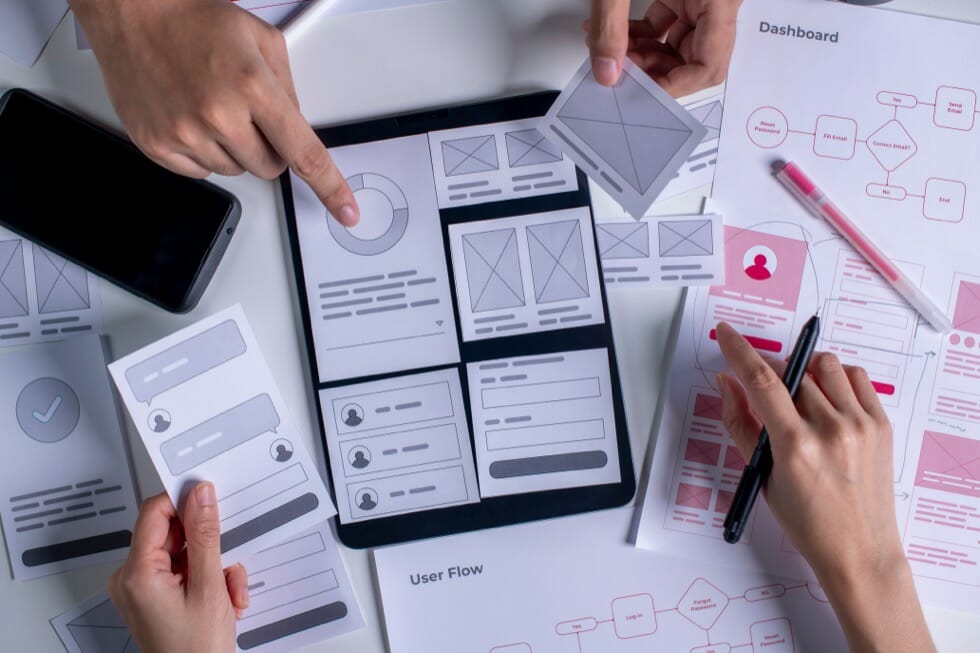UX is changing. The use of animation in websites and mobile apps has exploded in recent years because it gets—and holds—people’s attention and improves user experience. And UX animation can even go a step further by directing users to take the next step in a positive, engaging way.
This guide describes how animation can enhance user interaction and experience, simplify complex instructions, and improve brand recognition.
Increase User Engagement
Animations increase user engagement by attracting the customer’s attention. As humans, we’re wired psychologically to be distracted by motion. Our peripheral vision notices movement and directs our brain to pay attention to it. Standing out visually means attracting more customers and pulling them into your site.
For example, Netrix Digital pulls a viewer into looking at each option on the page as the animation runs. Receiving part information and part entertainment makes the customer dig deeper into the site to learn more.
Simplify Complex Concepts
Use animation to help customers build prototypes in their heads that explain complex topics. For example, animation can help guide customers through a process and teach them how to use a software application. Think about internal training courses and how they use animation to keep users from simply clicking through to the skills test. Instead, the animations help encourage and direct users to interact with the information even if they’ve seen it before.
Animation simplifies complex concepts to make the subject engaging and memorable. One example is the School of Motion. From the initial landing page, the animation draws a user in.
Enhance User Experience
Animation and motion in UX design enhance the user experience. A positive user experience is critical in a world where customers are bombarded with information and marketing. There’s a window of opportunity to attract a customer, and it’s 8 seconds—8 seconds to establish a connection and generate interest.
Animation enhances user experience by:
- Capturing attention, which draws the customer into the site
- Improving usability. Animation helps guides the user through a process visually
- Adding personality. Motion is entertaining and promotes engagement
- Improving product attractiveness. Animation creates interest and makes the product more appealing
Using motion with UX design enhances the user experience and makes users feel more connected to the business or product.
Consider Vibor. Their product is machined parts, but their website is astoundingly captivating. The animation creates interest and builds excitement.
Increase Brand Recognition
Remember the 8 seconds you have to attract a customer’s attention? In those same 8 seconds, animation can build brand recognition. The benefit of brand recognition? Customers no longer question whether they are purchasing your products or services, they simply do.
Brand recognition sells and generates business revenue. Customers that recognize and trust your brand won’t look anywhere else.
No business is better at brand recognition than Apple. Every holiday ad and every product page create a unique customer experience. Apple has such a loyal customer base not only because of the quality of the products but because of their customer experience and brand recognition.
Animation in UX design engages customers and has a memorable impact. The benefits include attracting customers’ attention and creating an engaging, positive experience. Positive customer experiences result in increased brand recognition, creating loyal customers and ongoing revenue.
Even complex topics are improved by using animations that guide users visually. Animations not only help explain a topic, but they also engage the user. Make your UX designs memorable and engaging with animation.

